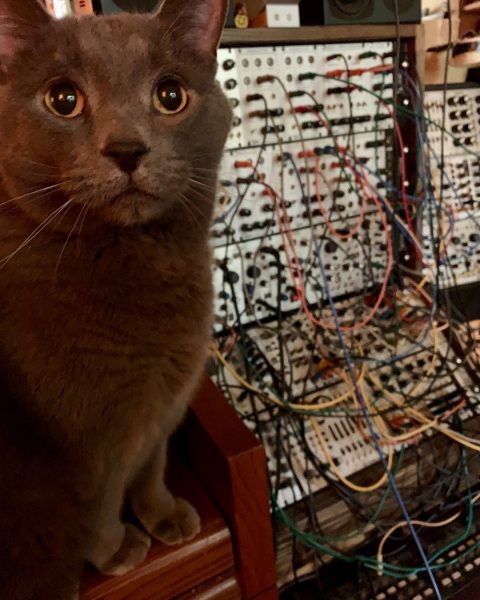
Handsome cat and a modular synth. Life is good.
From weedsnob via Instagram.

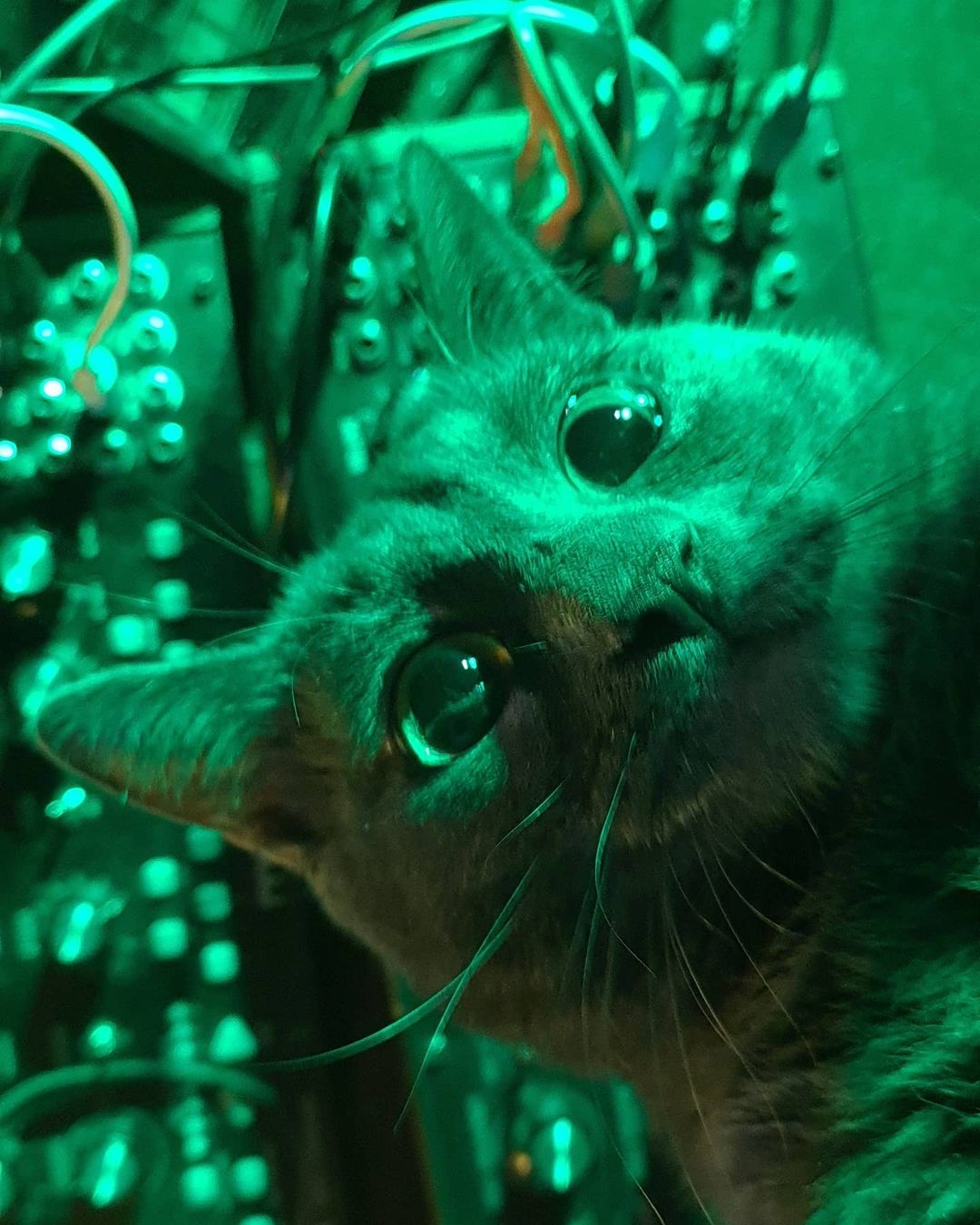
This cat has some amusing photos in front of a Moog modular. The images are also rather…green. You can see more in the Instagram post from dj.wadada embedded below.
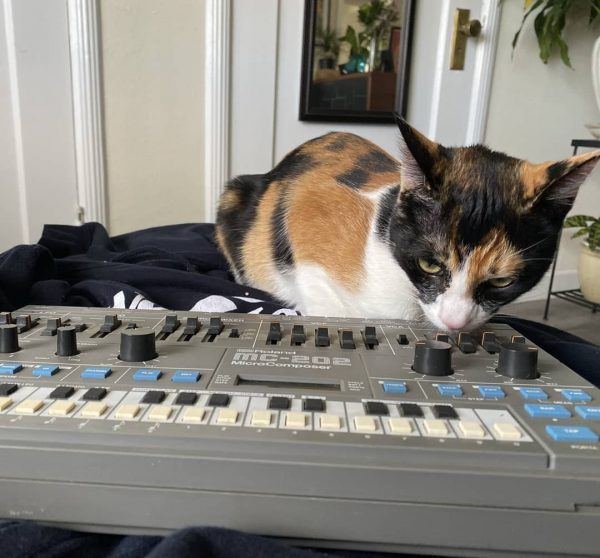
Lola (the calico cat) is inspecting a Roland MC-202 rhythm composer. From exfade_electronics via Instagram.
More accent? Lola (the cat) probably has a better grasp of the sequencer than I do!
The MC-202 was among Roland’s first grooveboxes. It has a synthesizer architecture (and visual look) similar to the original SH-101, but also looked ahead to the TB-303.
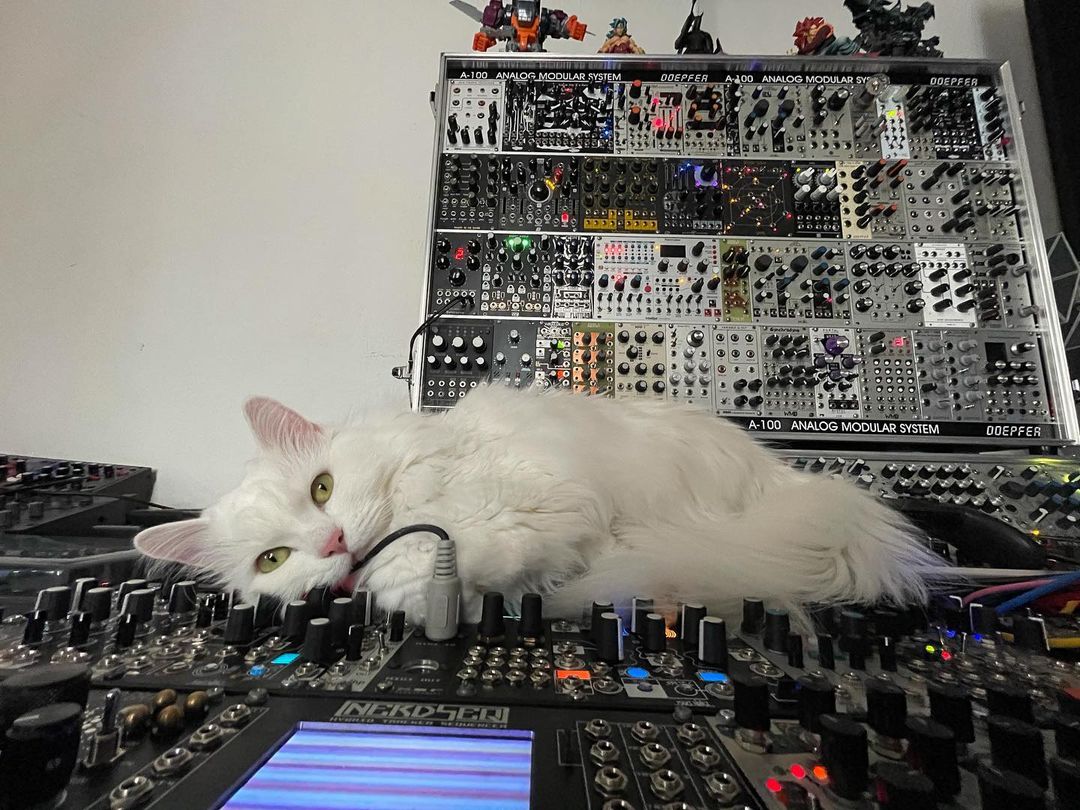
A beautiful white friend returns, longing behind a Nerdseq tracker-sequencer and in front of the same massive modular system from this post. We also see modules on the vertical section from Rossum Electro-music, Make Noise, Mutable Instruments, Intellijel, TipTop Audio, SSF, Random Source “EuroSerge”, as well as Catalyst Audio, Ciat Lombarde, and Mystic Circuits.
From blush_response via Instagram.
The Nerdseq is an intriguing instrument, essentially an old 90s-style “tracker” sequencer in Eurorack form. The boxes on the screen would be familiar to anyone who worked with trackers and MOD files, but the flexibility and possibilities of CV input and output.
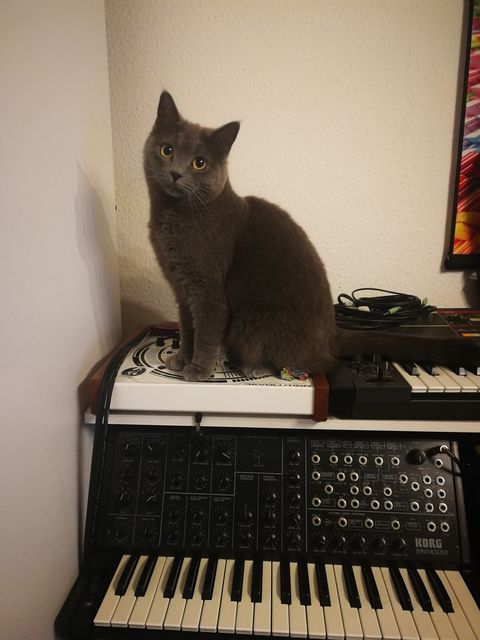
Milali from Stuttgart poses elegantly atop a Future Retro Revolution synthesizer. Below is a Korg MS-20. A beautiful cat with two beautiful instruments.
Submitted by Caroline Sommer via our Facebook page.
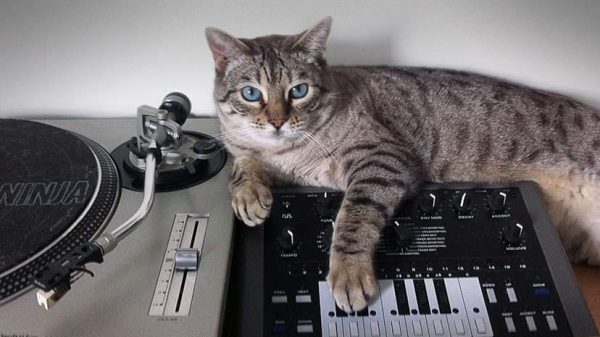
This cat is laying down some bass lines with the Xoxbox from Mode Machines. From Martin Nilsson via Facebook.
Cats love acid, it’s a fact!
The Xoxbox is a clone of the infamous Roland TB-303. Although smaller, it includes all the interface elements including the knobs and the one-octave keyboard section. It can also be used as a MIDI sequencer and controller.
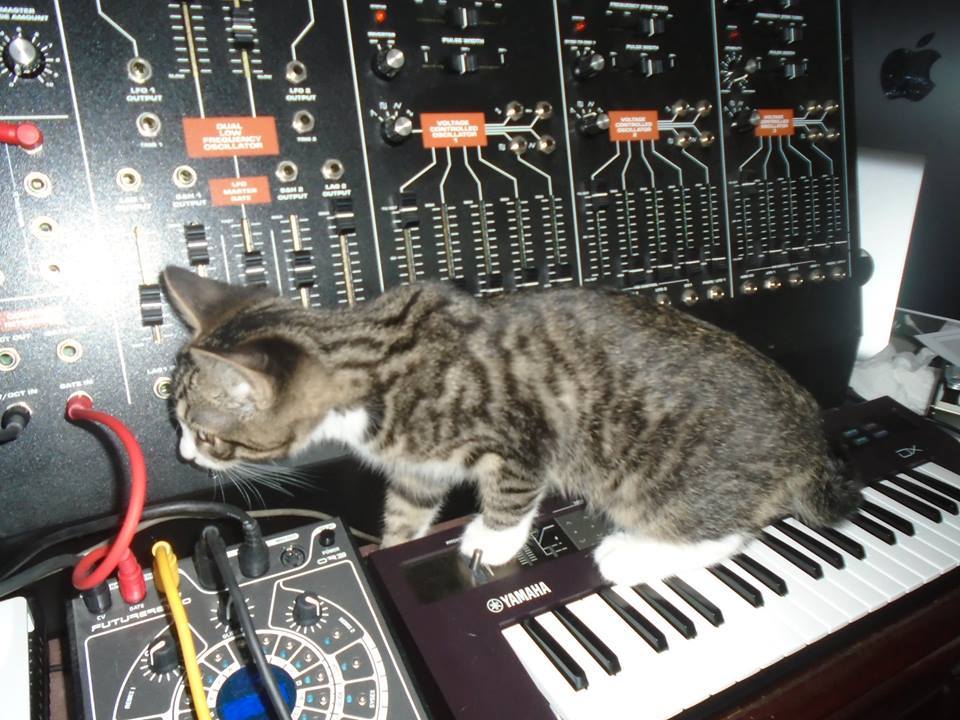
Mackie the cat with a MacBeth M5 synthesizer. We also see a Future Retro Orb sequencer and a Yamaha Reface. From Phil Walling via Facebook.
Mackie (cat) working the ‘Mackie’ (MacBeth M5)
The MacBeth M5 is modern but rare analog synthesizer. It is reminiscent of a black-and-orange ARP 2600, but is a completely different instrument.
While reminiscent of the 2600, this is not a clone. It’s a semi-modular synthesizer that features a significant array of real-time analog controls with absolutely no digital circuitry at all. Totally faithful to the design and concept of early analog synthesizers, all sounds must be created by hand, tweaking knobs, patching cables and using a bit of creativity. There is no patch memory, no MIDI and no USB. Just really great analog sounds.
http://www.vintagesynth.com/misc/macbethm5.php

A cat naps next to a Behringer CAT synthesizer. Submitted by Tommy Lok via our Facebook page.
The Behringer CAT is a re-creation of the infamous Octave CAT synthesizer. We at CatSynth are looking forward to doing a side-by-side comparison in the near future.